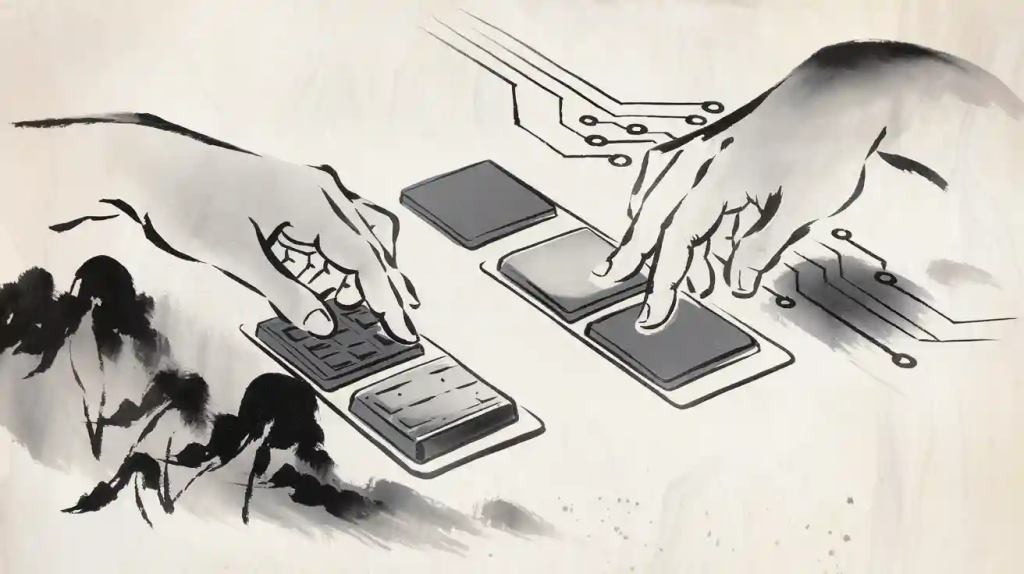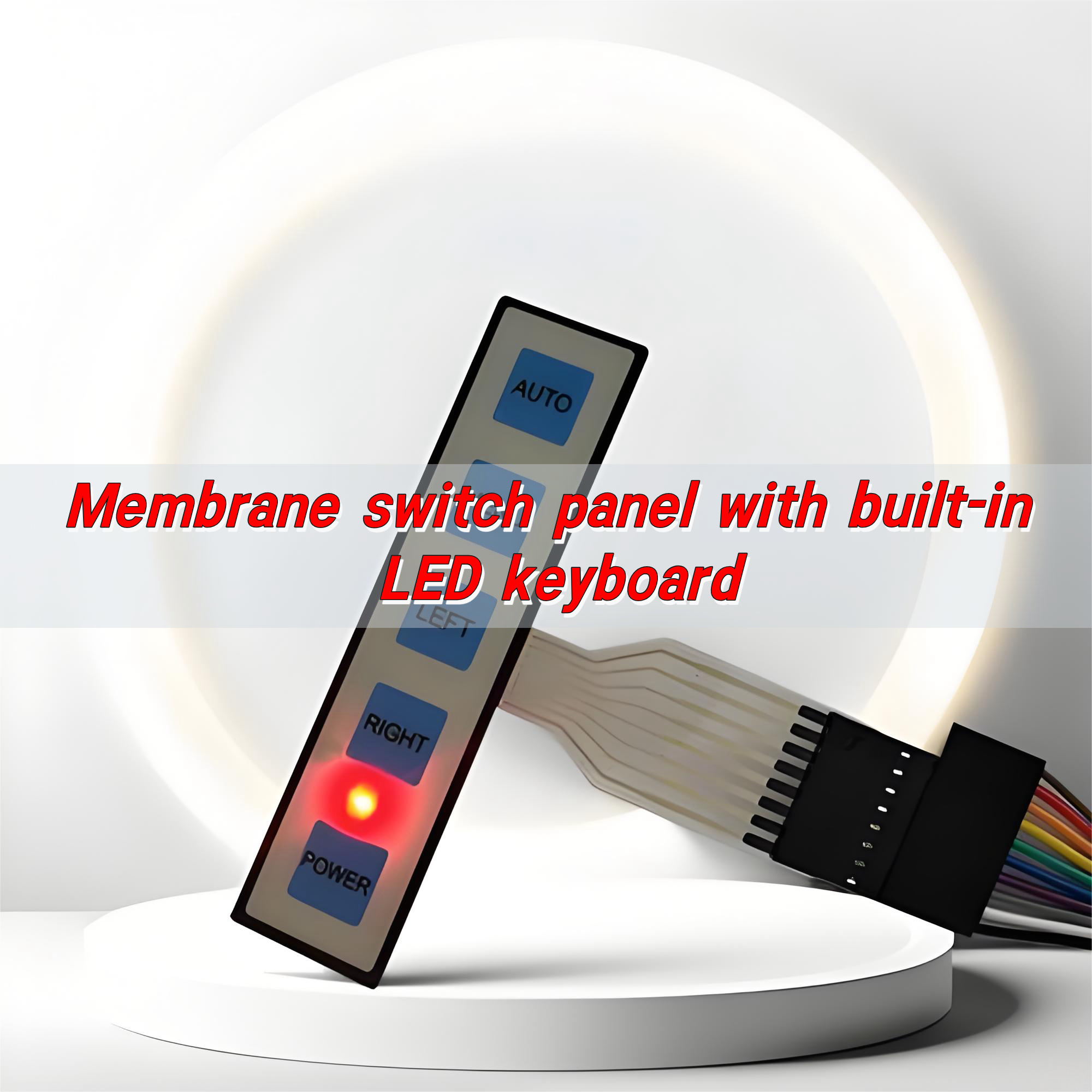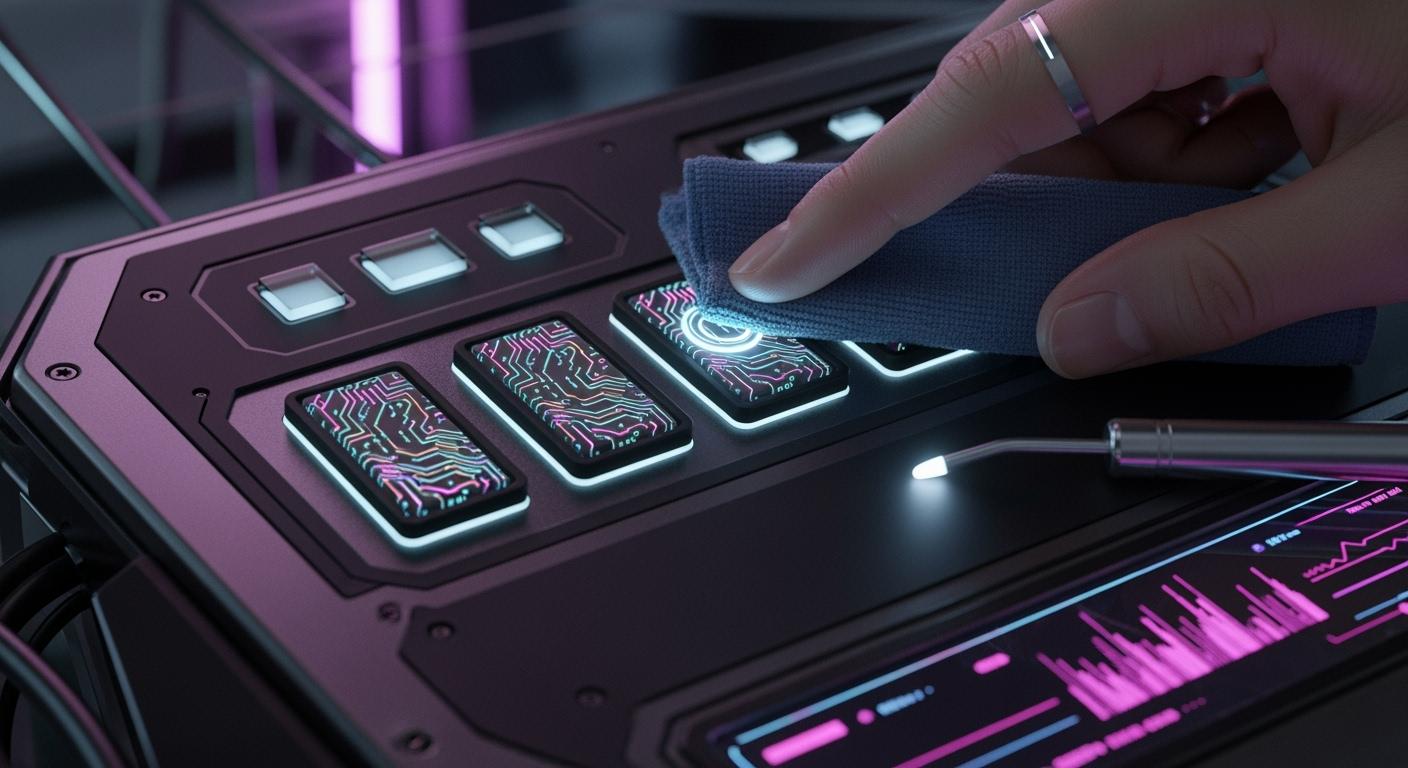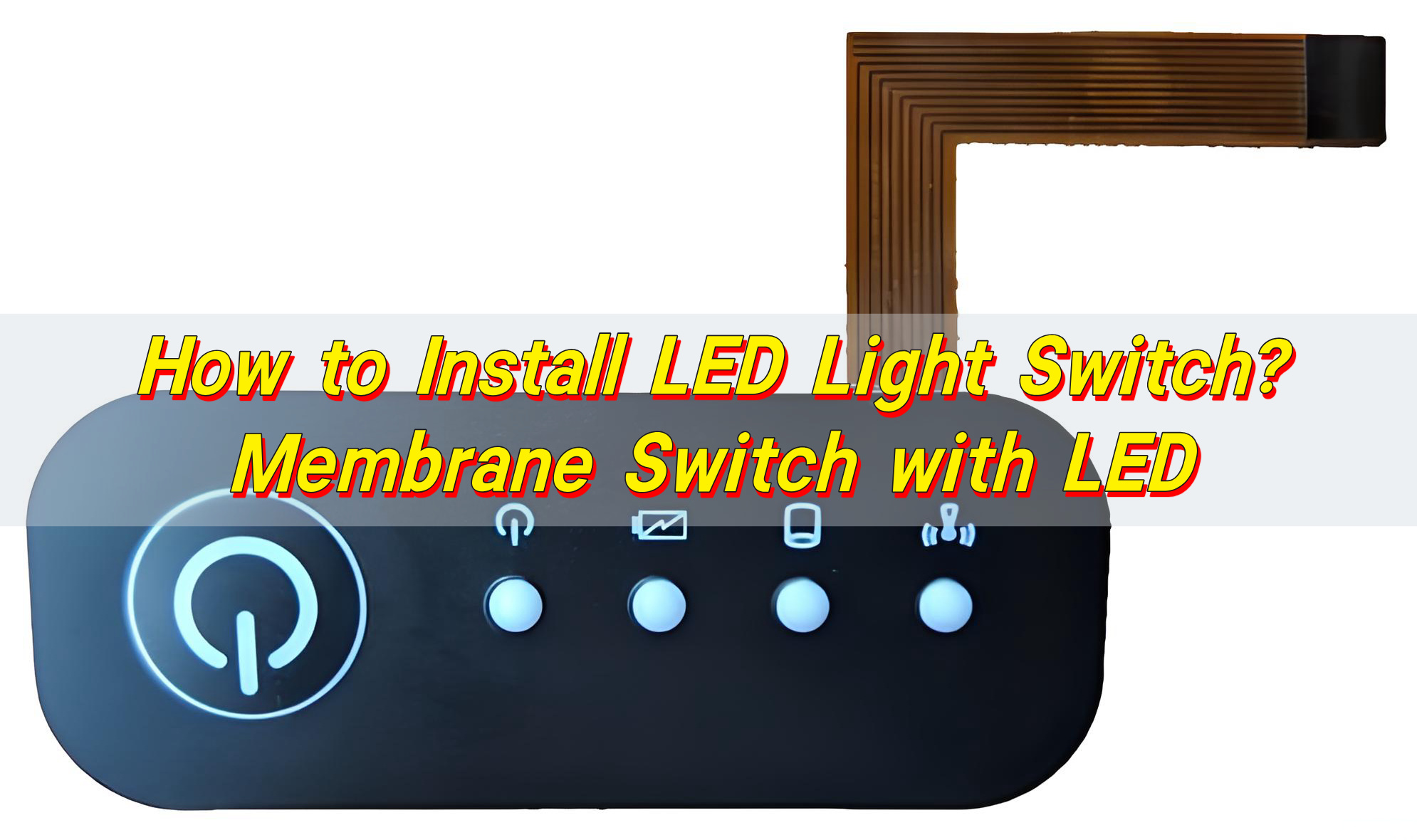
Understanding the Difference Between Tactile and Non-Tactile Membrane Switches
Understanding the Difference Between Tactile and Non-Tactile Membrane Switches

When choosing a membrane switch, knowing tactile and non-tactile types helps. A tactile membrane switch gives physical feedback, like a ‘snap’ or ‘click.’ This makes it easy for users to understand when pressed. A non-tactile membrane switch is quiet and uses sights or sounds instead of touch.
Picking between these types depends on different things:
- Non-tactile switches last longer and cost less.
- Tactile switches give better feedback and improve user experience.
- Needs like sensitivity and quick response also matter.
By thinking about these points, you can pick the best option for you.
Key Takeaways
- Tactile switches give a ‘click’ feel when pressed. This helps users know the button worked and boosts confidence.
- Non-tactile switches are quiet and simple. They are great for places like offices or hospitals where less noise is needed.
- Think about what you need before picking a switch: tactile for feedback and accuracy, non-tactile for saving money and quiet use.
- Tactile switches last longer because of their strong design. Non-tactile switches cost less and are easier to make.
- Always try both types of switches first. Make sure they fit your needs before choosing one.
Construction and Design
Parts of tactile membrane switches
Tactile membrane switches have many layers, each with a job. The top layer is the graphics overlay, which users see and touch. It is made from strong materials like polyester (PET) or polycarbonate (PC). This layer shows the design and labels for the keys. Below it is the graphics overlay adhesive layer, which sticks the overlay to the circuit layers. This thin but tough layer keeps the switch durable and long-lasting.
The upper and lower circuit layers are the main parts of tactile switches. These layers, made of PET with conductive lines, create an electric connection when pressed. Between them is the spacer layer, which keeps them apart and adds to the tactile feel. The metal dome is what makes tactile switches special. It gives the “snap” or “click” feeling when pressed. Lastly, the back adhesive layer holds the switch to the surface. It also protects against water and heat.
| Part | What It Does | Key Features |
|---|---|---|
| Graphics overlay | Made of PET or PC; shows design and keys | Clear, strong, and flexible |
| Graphics overlay adhesive layer | Sticks overlay to circuits; 0.05-0.15 mm thick | Strong and resists aging |
| Upper and lower circuit layers | Made of PET with copper; 0.05-0.25 mm thick | Conducts electricity; common thickness 0.125 mm PET |
| Spacer layer | Separates and connects circuits; 0.05-0.3 mm thick | Insulates and adds tactile feel |
| Back adhesive layer | Sticks switch to surface; uses strong adhesives | Waterproof and heat-resistant |
Parts of non-tactile membrane switches
Non-tactile switches are like tactile ones but simpler. They do not have the metal dome that gives feedback. The graphics overlay is still the top layer, showing designs and protecting the switch. Below it, the graphics overlay adhesive layer sticks the overlay to the circuit layers.
The circuit layers in non-tactile switches are easier to make. Instead of a metal dome, they use a printed conductive pad. This pad connects to the circuit when pressed. This design removes the tactile feel but makes the switch cheaper to produce. The spacer layer still separates and insulates the circuits. The back adhesive layer keeps the switch attached to the surface.
Non-tactile switches are great for quiet and low-cost uses. Their simple design makes them reliable and easy to use in many devices.
Differences between tactile and non-tactile keypads
Tactile and non-tactile keypads work differently and feel different to use. Tactile keypads have a metal dome that presses down when used. This gives a “click” feeling, making it clear the button was pressed. Non-tactile keypads use a printed pad instead. They do not give physical feedback. Users rely on sounds or lights to know the button worked.
| Feature | Tactile Keypads | Non-Tactile Keypads |
|---|---|---|
| Physical Response | Gives a “click” feeling when pressed | No physical feedback |
| Construction | Has a metal dome under the overlay | Uses a printed pad under the overlay |
| Activation Mechanism | Metal dome presses to connect circuits | Printed pad touches circuits directly |
| Durability | Can last through many presses | Works well but lacks tactile feedback |
| Environmental Sealing | Sealed to block dirt and moisture | Less protection from dirt and moisture |
Tactile switches last longer because they are sealed better. This sealing keeps dirt and water out, lowering the chance of problems. Non-tactile switches are simpler but may not handle tough environments as well.
Functionality and Feedback
How tactile membrane switches give feedback
Tactile switches give a clear “snap” or “click” when pressed. This lets you know the button worked. A metal dome under the top layer makes this happen. When pressed, the dome flattens, connects the circuit, and creates the “click.”
Studies show physical feedback helps users perform better. For example:
- Adding force feedback improves accuracy in shape-related tasks.
- Temperature feedback raises recognition accuracy to over 85%.
- Visual feedback alone has low accuracy, below 50%.
These results show tactile feedback makes devices easier to use. It is especially helpful for tasks needing speed and precision. Whether using machines or medical tools, tactile switches give confidence and reliability.
How non-tactile membrane switches work
Non-tactile switches work differently and do not give a “click.” Instead, they use lights or sounds to show the button worked. When pressed, a printed pad under the top layer connects the circuit. This design is quieter and simpler.
Non-tactile switches are great for quiet places like offices or hospitals. They are also cheaper to make because of their simple design. But without tactile feedback, you rely on lights or sounds to confirm the button press.
Even though they lack the “click,” non-tactile switches are useful. Their simplicity and low cost make them a good choice for many uses.
Comparing tactile and non-tactile keypads
Tactile and non-tactile keypads feel very different to use. Tactile keypads give a “click” when pressed, helping you avoid mistakes. This makes them great for fast or repeated actions. The “click” also reassures you the button worked, which is helpful in tough tasks.
Non-tactile keypads are quieter and smoother to use. They depend on lights or sounds to show the button worked. This makes them good for quiet places but may need more focus from you.
Choosing between them depends on what you need. If you want precision and feedback, pick tactile switches. For quiet or low-cost needs, non-tactile keypads are a smart choice.
Applications
Common uses for tactile membrane switches
Tactile membrane switches are used where accuracy and feedback matter. They give a “click” feeling, making them reliable in tough jobs. Examples include:
- Medical devices: These switches meet FDA rules and work in clean areas. They need little force but feel responsive, perfect for surgery tools and tests.
- Aerospace: Tactile keypads are used in control panels to improve safety and ease of use.
- Defense and military: Communication tools and systems depend on these switches for their strength and quick response.
- Consumer electronics: Home gadgets and appliances use tactile switches for easy operation.
- Industrial machinery: These switches control machines, staying accurate and strong in rough conditions.
- Gaming consoles: Arcade games and gaming devices use tactile feedback for better play.
| Industry | Application Details |
|---|---|
| Medical Devices | Follow FDA rules, reliable, moisture-proof, and need low force but feel responsive. |
| Aerospace | Used in control panels and instruments. |
| Defense / Military | Found in communication tools and control systems. |
| Consumer | Used in home gadgets and electronic devices. |
| Industrial | Control machines with accuracy and durability. |
| Gaming | Used in gaming consoles and arcade machines. |
Common uses for non-tactile membrane switches
Non-tactile switches are best for quiet and low-cost needs. Their simple design works well in many places:
- Office equipment: Non-tactile keypads are in printers and copiers where quietness is key.
- Healthcare: These switches are in hospital tools, working smoothly without noise.
- Consumer electronics: Remote controls and touch panels use non-tactile keypads for quiet and sleek use.
- Automotive: Non-tactile switches are in dashboards and panels for smooth control.
Picking the right switch for your needs
Choosing between tactile and non-tactile switches depends on what you need. If you want accuracy and feedback, tactile switches are better. They work well in places like medical tools or factory machines. Non-tactile switches are good for quiet spaces or saving money. They are simple and affordable, great for home gadgets and office tools.
Think about user needs, environment, and budget when deciding. Match these with your goals to pick the best membrane switch for your job.
Advantages and Limitations
Benefits of tactile membrane switches
Tactile membrane switches have many good features. They give a clear “click” feeling when pressed. This helps you know the button worked. It lowers mistakes, especially in important tasks. The “click” also makes users feel confident. This is why they are great for medical tools and factory machines.
These switches are also very strong. The metal domes in their design make them last longer. They can handle being used many times without breaking. This makes them perfect for tough jobs like aerospace and defense systems.
| Benefit | Description |
|---|---|
| Better User Experience | The “click” tells users the button worked, reducing mistakes. |
| Strong and Durable | Metal domes make these switches tough and long-lasting. |
| Great for Important Jobs | Perfect for tasks needing feedback, like medical tools or control panels. |
Benefits of non-tactile membrane switches
Non-tactile switches are simple and cost less to make. They do not need metal domes, which makes them cheaper. Their simple design also means fewer parts that can break.
These switches are quiet, so they work well in offices or hospitals. They are smooth to use and look modern. This makes them good for things like remote controls and touch screens. Even without the “click,” they are useful for many devices.
Limitations of tactile and non-tactile keypads
Both types of switches have downsides. Tactile switches are strong but cost more to make. The metal domes add to the price. For some uses, the “click” might not be needed, making them too fancy.
Non-tactile switches do not give a “click” feeling. You have to rely on lights or sounds to know the button worked. This can cause mistakes in fast or tricky tasks. They are also less strong and may not last in tough conditions.
By thinking about these pros and cons, you can pick the best switch for your needs.
Tactile and non-tactile switches are used for different tasks. Tactile switches are great for jobs needing touch feedback. They work well in machines and medical tools. Their design helps users be precise and confident. Non-tactile switches are lighter and cost less. They are perfect for gadgets like phones and tablets.
Think about what matters most to you. If you need feedback and strength, pick tactile switches. For quiet use or saving money, non-tactile switches are a good choice.
| Type | Market Share (2023) | Growth Rate | Applications |
|---|---|---|---|
| Tactile | Bigger | Medium | Machines, car dashboards, medical tools |
| Non-Tactile | Smaller | Faster | Gadgets like phones, tablets, and laptops |
Tip: Think about user needs, where it will be used, and your budget to choose the best switch.
FAQ
How long do tactile and non-tactile switches last?
Tactile switches can last 1-5 million presses. This is because they use strong metal domes. Non-tactile switches last longer, over 5 million presses. They are great for things used a lot.
Can you customize tactile and non-tactile switches?
Yes, both types can be made to fit your needs. You can change overlays, colors, lights, and circuits to match your project.
Are tactile switches more costly than non-tactile ones?
Yes, tactile switches cost more. This is due to their metal dome design. Non-tactile switches are simpler and cheaper, good for saving money.
Which switch type works better outdoors?
Tactile switches are best for outdoor use. They are sealed to block water, dirt, and heat. This makes them work well in tough weather.
How do I pick the right switch type?
Think about what you need. Use tactile switches for feedback and accuracy. Pick non-tactile switches for quiet and low-cost needs. Check user needs, the environment, and your budget to decide.
Tip: Always test samples to make sure the switch works for your project.

Membrane Switch Panel with Built-in LED Keyboard
What Is a Built-in LED Keyboard? A built-in LED keyboard is more than just a control interface—it’s the fusion of tactile feedback, lighting technology, and visual appeal. Instead of relying on external illumination, each key is integrated with its own LED source, creating a self-lit surface that glows precisely where you touch. This structure is ...

Top Tips for Maintaining Rubber Membrane Switches
If you want your rubber membrane switch to perform reliably, regular cleaning stands as the best method to prevent issues. Dirt, moisture, and dust can lead to sticky or unresponsive keys, shortening the lifespan of your device. You reduce risks like physical damage, electrical malfunction, and environmental contamination when you clean properly. Tip: Gentle cleaning helps ...

How to Install LED Light Switch? Membrane Switch with LED
Membrane switches with LED lighting have become a game-changer in modern interface design. They combine tactile responsiveness with vivid illumination, enhancing usability and aesthetics. Whether in industrial control panels, medical devices, or consumer electronics, integrating LED into membrane keypads improves functionality and user experience. What Is a Membrane Switch with LED? A membrane switch with ...
Contact us online